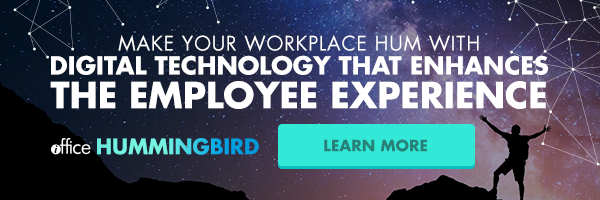5 Digital Signage Trends to Have on Your Radar


You know that J.R.R. Tolkien quote that backpackers and urban explorers love, “Not all those who wander are lost”? It absolutely does not apply to the workplace. If someone is wandering around the office, they are very much lost. No one saunters aimlessly around an office for fun.
That’s why businesses with larger corporate campuses need to install digital signage displays. The current technology is a great tool, and the impressive thing about digital signage is that it’s evolving at a rapid rate. Here are just a few of the digital signage trends you should keep an eye on.
Facial and Voice Recognition
While it may sound like the stuff of science fiction, facial recognition and voice recognition technology is built on solutions companies are already using. Websites already use eye-tracking and heat maps to see which types of content visitors view, and brands monitor browsing habits to learn more about their customers. Businesses then use this information to create a more personalized user experience (UX).
In a corporate context, facial recognition and voice recognition software can use workforce and workplace analytics to determine what information to display on the digital signage. For example, if an employee has a scheduled meeting every week at the same time, the software can detect who the employee is and recommend an available meeting space.
Data Analysis
Digital signage technology not only offers insight into the employees who actively engage with it but can also passively collect data about the individuals who just walk by. Bluetooth-enabled devices automatically transmit information about a user’s location. And if the digital signage kiosk has WiFi capabilities and an employee connects to it, the company has access to even more data.
With this information, organizations can identify traffic patterns and see which displays are being used and which aren’t. If employees never seem to use a digital signage display in a particular location, the company can relocate it to another place that may offer greater benefit. Companies can also use the data from digital signage kiosks to more accurately calculate occupancy and space utilization. Digital signage is another set of eyes and ears business leaders definitely need.
Interactivity and User Experience (UX)
Undoubtedly, every other aspect of the employee experience is interactive. And your workforce is likely accustomed to having access to on-demand, real-time information. Why shouldn’t digital signage displays offer the same features?
The advantage of interactive digital signage is it allows the communication of more information than a static display. Employees and visitors can scroll through multiple windows on the same screen, which improves the UX and decreases the hardware investment. Additionally, the ability to provide greater volumes of content allows companies to offer information about more topics and, in turn, assist a greater number of employees.
Near Field Communication and Mobility
Sometimes employees and visitors don’t have the luxury of standing in front of a digital signage kiosk. They might need the information the display has but are running behind and need a way to get that information without interrupting their journey.
Near field communication (NFC) solves this problem by allowing users to connect their mobile devices directly to the nearby digital signage kiosks. The connectivity area is limited but still enables users to get the information they need on-the-go. And if the digital signage display is interactive and has features like room reservation, the employee can find and book a nearby meeting area – all without stopping.
In a more general sense, NFC enables improved wayfinding. Wayfinding helps employees and visitors navigate through the workplace. And with NFC, they can use their mobile devices to more easily orient themselves in the space.
The ultimate goal is to increase the connectivity area so that any mobile device can become a portable digital signage display – no matter the location in the workplace.
IWMS Integration
To take advantage of the full value of digital signage, companies must be able to connect their integrated workplace management systems (IWMS). When digital signage displays and an IWMS can communicate, workplace and workforce data can be transferred between the two technologies. Sharing and collecting this data improves both the UX and the employee experience.
Companies who want to take advantage of these new technology trends like facial and voice recognition and near-field communication must connect their IWMS to digital signage kiosks. Otherwise, on-demand, real-time features are simply not feasible.
Current digital signage technology is already useful. But if these trends are any indication, it’s on pace to become even more powerful.
iOFFICE Hummingbird features the wayfinding and digital signage capabilities you need to elevate the employee experience. Request a demo to see Hummingbird in action.
